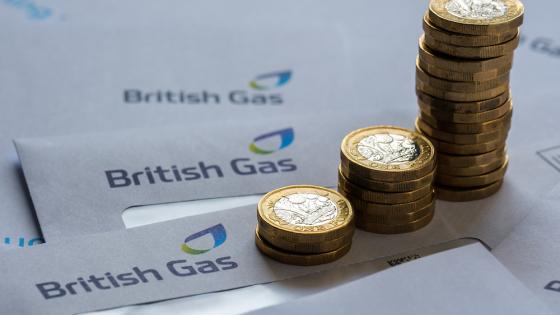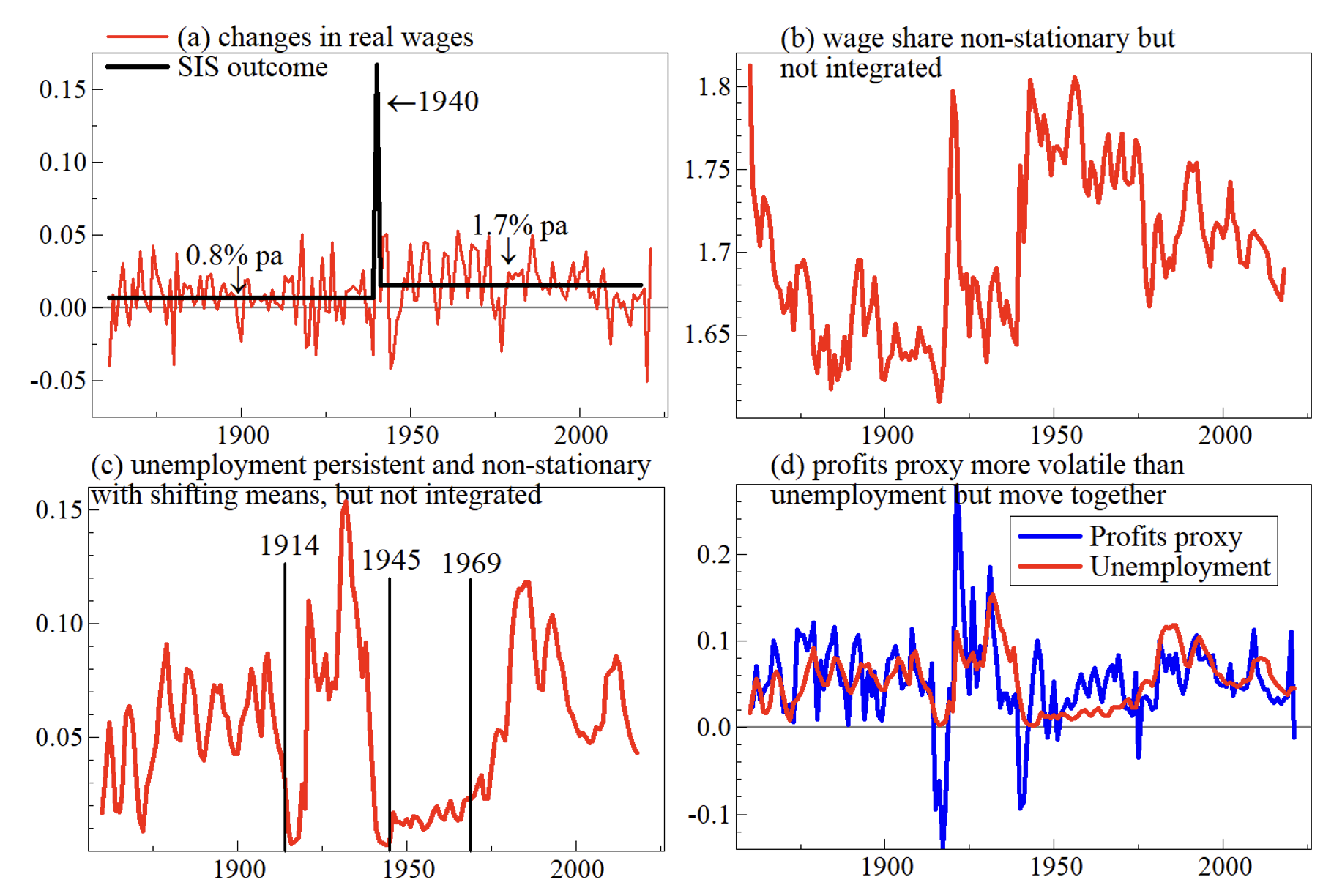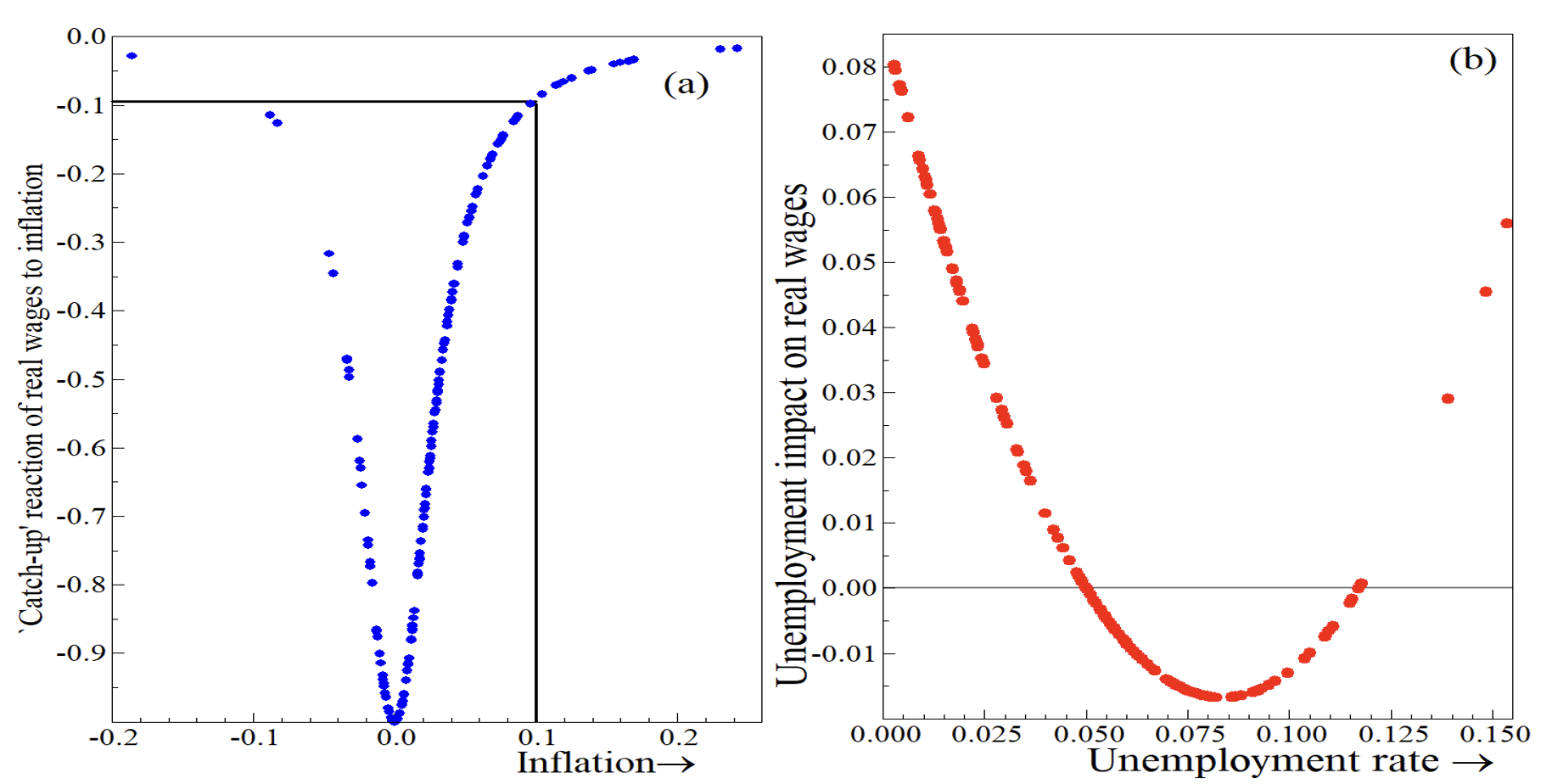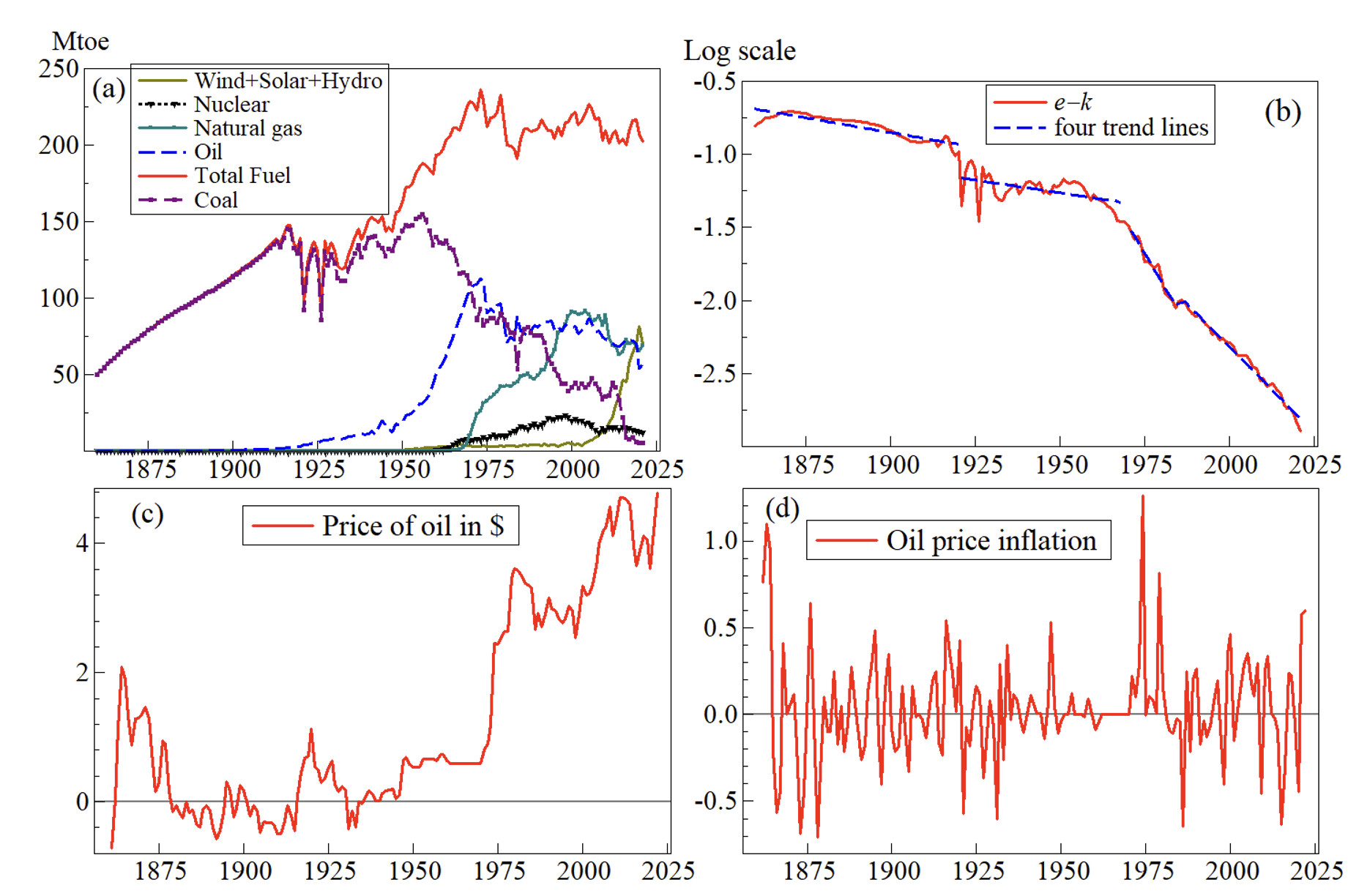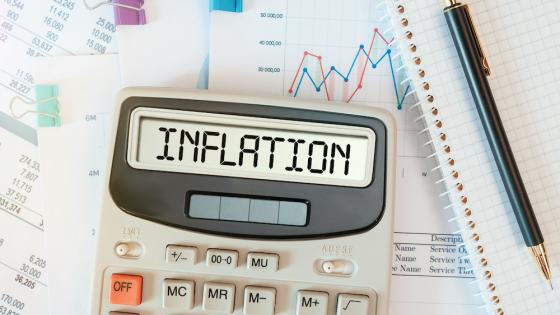The recent relatively sudden increases in inflation rates in many countries, especially energy and food prices, pose financial problems for families with high expenditure shares on those items. Price increases in oil, natural gas and food have been large, stimulated by a mix of recovery from COVID-19, supply chain issues and the Russian invasion of Ukraine, exacerbated by Brexit for the UK.
High rates of inflation are not new to the UK, although their low rates for the last 30 years may have lulled memories. Our long-run time series saw major wars, oil (and other) crises and unanticipated events like pandemics, providing evidence on past and current inflation. Inflation is expected to rise further in 2022 and beyond, driven in large part by continued conflict in Ukraine and reductions in Russian gas supplies to the EU, so it is crucial to understand how the cost of energy feeds through into inflation and the broader UK economy. In this column, we describe the key elements of our four empirical models for UK real wages, unemployment, productivity, and price inflation, which are then combined to elicit the aggregate impact on UK inflation via the channels that energy prices affect the economy. The current situation was not foreseen in 2021 and could not have been forecast, so we calculate projections for 2022 using recent data observations.
Figure 1 records UK time series over 1860–2021, showing huge increases in nominal annual wages and prices (700-fold and 100-fold, respectively, since 1860, compared to productivity risingseven-fold) with annual price inflation rates reaching more than 20% on three occasions. Real wages have closely tracked productivity, flat-lining from 2008 onwards, whereas real GDP per capita hasrisen by 17% since then, highlighted in the box in Figure 1(d)), so UK policies to successfully limitgreenhouse gas emissions have not reduced economic growth (Castle and Hendry 2022).
Figure 1 (a) Logs of UK wages (W) and prices (P), (b) their rates of inflation (Dx=Dlog(X)), (c) real wages (w-p) and productivity (measured by GDP per worker per year, y-l) in logs; (d) GDP divided by population, all 1860–2021
We built a model of real wage growth over 160 years which is constant and captures both theGreat Recession and the ‘flat-lining’ of real wages. Figure 2 records real wages, labour’s share in national income, the unemployment rate, which is persistent and non-stationary with shiftingmeans from exogenous shocks such as wars and policy, and its relation to a profits proxy measured by the difference between the long-term interest rate and changes in GDP.
In Figure 2(a), ‘SIS’ denotes step indicator saturation (available in PcGive and gets in R) applied to highlight the key location shift of a doubling in the growth rate of real wages post-WWII from 0.8% to 1.7%, without which no good model could be developed. Possible explanations are the increase in female labour force participation after WWII and a rapid upskilling of workers during the war (e.g. Bernstein and Martinez 2021). Applying SIS to the growth rate in productivity shows a shift from 1.2% to 1.7%, but at a different time so the location shifts do not co-break. The location shifts in unemployment and inflation also do not match. We find that price inflation affects real wages non-linearly as a catch-up mechanism if past wages have been eroded from less than complete adjustment, playing an important role in a wage–price spiral, shown in Figure 3(a). The non-linear mapping is V-shaped with little reaction of real wages at low inflation, but workers are more attentive if price inflation exceeds 6%-8% per annum so act to prevent further erosion of their real wages (e.g. Reis 2006). This has implications for the UK as CPI inflation is currentlyrunning above 8% and is increasing.
Figure 2 (a) Changes in real wages; (b) wage share; (c) unemployment rate; and (d) profits proxy and the unemployment rate, 1860–2021
The second non-linearity in Figure 3(b) shows that increasing unemployment initially lowers real wages from a loss of worker’s bargaining power, but once unemployment exceeds around 8%, real wages increase for those still employed, reflecting movements along the marginal product curve: high real wages are not causing high unemployment. The short-run impact of changes in productivity on real wages is a half and is symmetric, so also reflects a dampening of real wages from the productivity slowdown since 2008. There is a strong equilibrium correction from the labour share of about 20% per annum, as well as the non-linearities.
Unemployment plays a key role in determining real wages, so we updated the model of unemployment in Hendry (2001) where the unemployment rate falls if hiring is profitable andincreases if not. Figure 2(d) records the measure of the profits proxy along with the unemployment rate showing the two series move together, entailing an equilibrium of about 5%, close to the historical mean. The model is remarkably stable over the COVID-19 pandemic and financial crisis, where quantitative easing lowered the long-term interest rate, offsetting much of the fall of more than 6% in real GDP.
Figure 3 (a) Wage-price spirals calculated from observed data using estimated coefficients and (b) 'involuntary’ unemployment.
Productivity is also crucial in real wage determination, so we built a model of productivity that depends on energy. Figure 4 shows that total UK energy use rose five-fold from 1860 to 1975, being relatively steady since despite the mix of sources altering substantially. Energy per unit of capital in Figure 4(b) shows a dramatic drop, with energy efficiency improving by more than 80%, relatively slowly till the mid-1950s then more rapidly since at about 2% per annum. The impacts on nominal US dollar oil prices of the 1970s oil crises, 2010 speculation, and COVID-19 are visible. The resulting large rises in UK electricity prices despite extensive renewable supply are partly because wholesale electricity reflects marginal prices, and the UK mothballed its last gas storage facility in 2017.
Rates of technical progress have varied greatly over time, inducing changing trends in the relationships between output and capital, yet the real-wage data show a close relation to productivity. Given the rises in the prices of oil and gas since 2021, and possible supply cuts, we develop a dynamic model of output per worker as a function of capital per worker and energy relative to the capital stock (all in logs) shown in Figure 4(a). The derived long-run labour coefficient of 0.59 is similar to the aggregate labour share of about two-thirds. The role of energy, at 0.28, seems too large, although increases in energy were as crucial to the industrial revolution as machinery to utilize it.
The model of price inflation uses the implicit GDP deflator, based on Hendry (2001) but updating to 2021. We commence the sample in 1965, given the many structural changes and non-constancies in the earlier period. There is some inflation inertia, effects from broad money growth and interest rates, both the change in the short-run and the short-long spread and energy prices, which are proxied by commodity prices, although not a significant role. There is a sizable coefficient on unit labour costs, which shows the important role for a wage price spiral in price inflation. We do not find a role for excess demand for goods and services, unlike earlier studies. Increases in the growth rate of M4, energy prices and world prices, and in the markup and long-term interest rates, all raise inflation, whereas increases in capital and energy supply, short-term interest rates, and unemployment reduce it. A reduction in energy availability of, say, 10% would simultaneously reduce output by 2.8% and exacerbate inflation to the same extent.
Figure 4 (a) UK total energy use (E, the sum of coal, oil, natural gas, nuclear, wind, solar & hydroelectric (all in millions of tonnes of oil equivalent, or Mtoe); (b) log energy per unit capital (e-k), with four sub-period trends; (c) logs of oil prices (Po) (in US$); and (d) oil price inflation, all 1860–2021.
Combining the empirical models described above with the non-linearities feeding through from the real wage equation to the price equation allows scenario projections to be made. Table 1 shows two conditional projection scenarios for inflation in 2022: a 150% or 300% increase in commodity prices, holding all other effects constant. Dm is the growth rate of broad money, π denotes the markup of nominal output over the wage bill, Rs the short-term interest rate, RL long-term interest rates, Dpo is the growth rate of commodity prices and Dpw is a measure of world inflation based on a trade-weighted world price index measured in £. Dpo in the top three rows uses an equally weighted average of a 50% increase for oil and 250% increase for natural gas, resulting in a 150% increase in commodity prices, whereas the ‘bad scenario’ has a 300% increase.
Despite a small direct effect of commodity prices on inflation in the price equation, the impact of the energy price increase contributes almost half of the projected contribution to price inflation in the first scenario and two-thirds in the second although these projections assume constant parameters in 2022. Given the contributions to inflation from the model, short-term interest rates would need to rise to 5% to offset the direct contributions of energy price rises in the first scenario, and as during the 1970s oil crises, interest rates would need to rise towards 20% in the second scenario to dampen inflation down to 2%, exceeding levels seen since the1970s (Hendry 2001).
Table 1 Contributions to 2022 inflation
Note: The penultimate column gives the projected inflation rate under alternative scenarios, and the last column the current inflation rate (August 2022)
The recent rise in UK price inflation was unanticipated, leading to a flurry of activity rethinkinginflation models. But high inflation rates are not new to the UK and history can shed light on the current inflationary climate. To use the historical evidence requires econometric methods that can handle non-stationarities in the form of distributional shifts, resulting in constanteconometric models despite the vast changes that economies have experienced. There is a non-linear adjustment of real wages to inflation where a wage–price spiral essentially adds a unitroot to the wage–price process when inflation exceeds about 8%. Given that inflation was 8.8% in July 2022, this non-linearity warns how inflation could potentially take off. The price and wage equations were combined with the non-linearities to obtain projections for their contributions to current inflation. A 150% increase in energy prices projects inflation to rise to 12.6%.
Notes: The views expressed here should not be attributed to the Department of the Treasury or the U.S. Government. Financial support from the Robertson Foundation and Nuffield College is gratefully acknowledged.
References
Bernstein, D H and A B Martinez (2021), “Jointly modeling male and female labor participation and unemployment”, Econometrics 9(4):46.
Castle, J L and D F Hendry (2014), “Semi-automatic non-linear model selection”, in N Haldrup, M Meitz, and P Saikkonen (eds), Essays in Nonlinear Time Series Econometrics, Oxford University Press (see also the Vox column here).
Castle, J L and D F Hendry (2022), “Econometrics for modelling climate change”, in J Hamilton (ed.), Oxford Research Encyclopedia of Economics and Finance, Oxford University Press.
Doornik, J A and D F Hendry (2021), Empirical Econometric Modelling using PcGive: Volume I. (9th ed.), Timberlake Consultants Press.
Hendry, D F (2001), “Modelling UK inflation, 1875–1991”, Journal of Applied Econometrics 16: 255– 275.
Pretis, F, J J Reade, and G Sucarrat (2018), “Automated general-to-specific (GETS) regression modeling and indicator saturation for outliers and structural breaks”, Journal of Statistical Software 86(3).
Reis, R (2006), “Inattentive producers”, Review of Economic Studies 73: 793–821.
